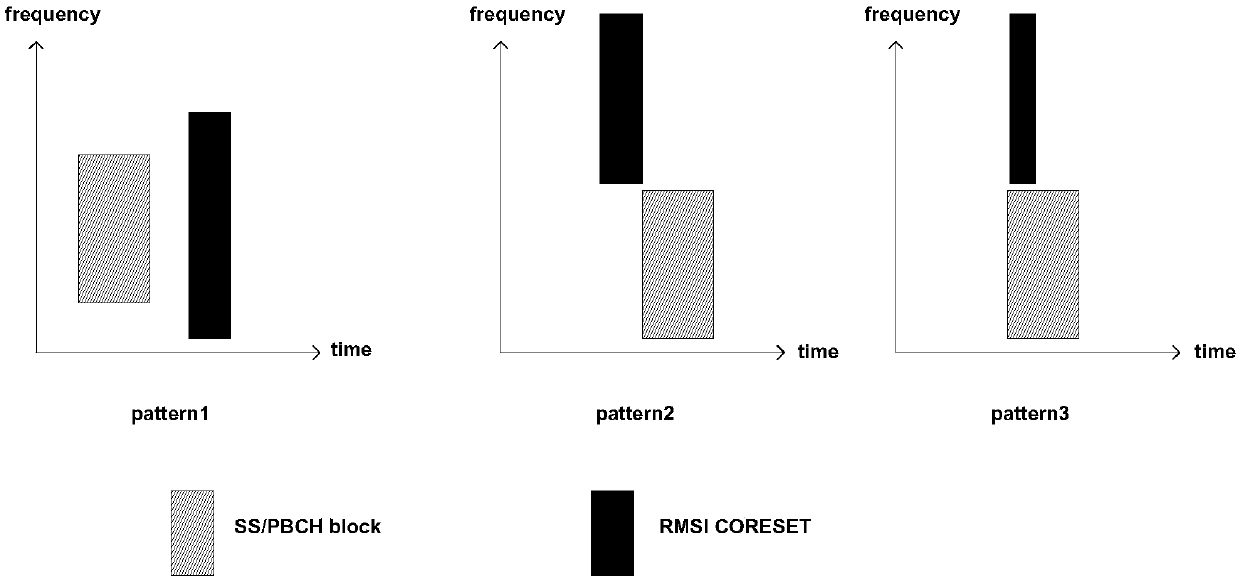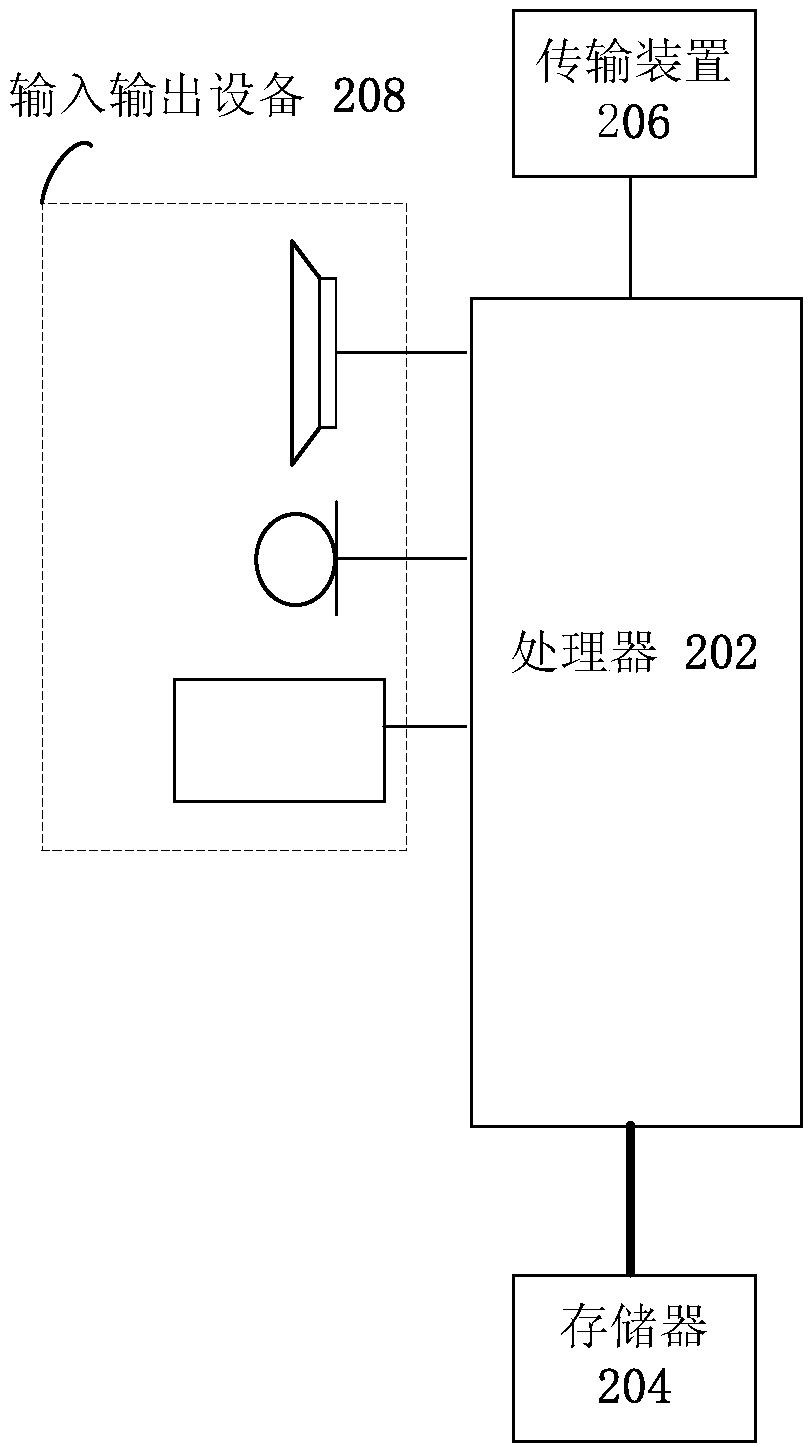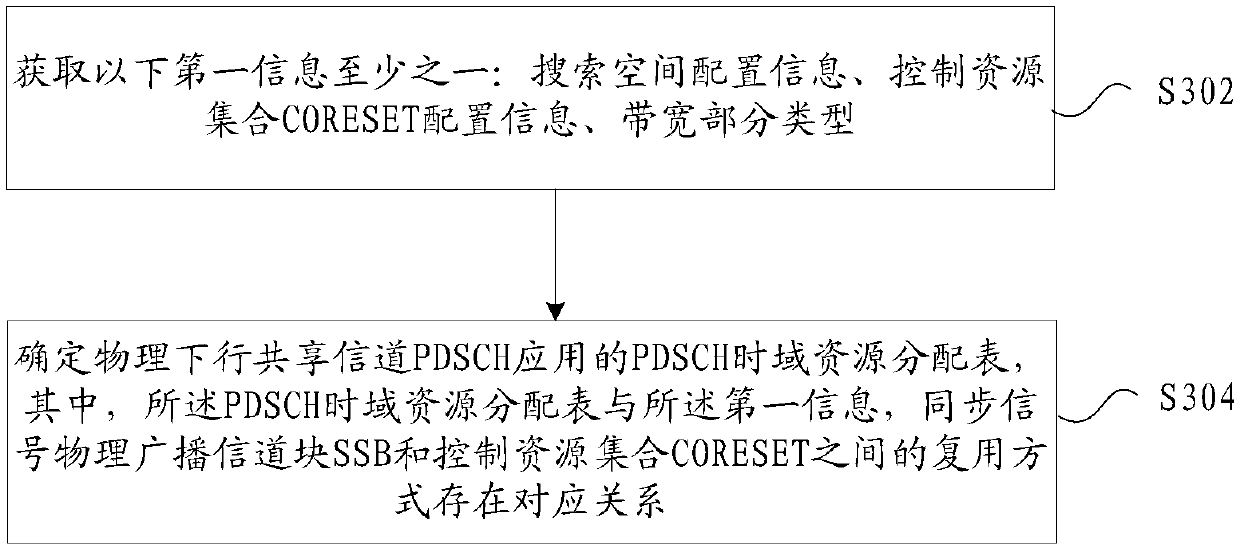Time domain resource allocation method and device
A technology of time domain resource and allocation method, applied in the field of time domain resource allocation method and device, can solve problems such as imperfect scheme for allocating time domain resources and the like
- Summary
- Abstract
- Description
- Claims
- Application Information
AI Technical Summary
Problems solved by technology
Method used
Image
Examples
Embodiment 1
[0022] An embodiment of the present application provides a mobile communication network (including but not limited to a 5G mobile communication network), and the network architecture of the network may include network-side devices (such as base stations) and terminals. This embodiment provides a time-domain resource allocation method that can run on the above-mentioned network architecture. It should be noted that the operating environment of the above-mentioned time-domain resource allocation method provided in the embodiment of the present application is not limited to the above-mentioned network architecture. .
[0023] The method embodiment provided in Embodiment 1 of the present application may be executed in a mobile terminal, a computer terminal, or a similar computing device. Taking running on a mobile terminal as an example, figure 2 It is a block diagram of the hardware structure of a mobile terminal of a time domain allocation method according to an embodiment of ...
specific Embodiment 1
[0115] This embodiment describes the method of determining the adopted default time-domain resource allocation table based on the search space configuration.
[0116] In this embodiment, for other transmission information (including such as paging information paging (that is, the PDSCH that carries the paging message), other system information OSI (that is, the PDSCH that carries the OSI), random access (that is, the random access that carries the random access process Incoming response PDSCH, or PDSCH carrying MSG4 in the random access process), etc.), when the time domain resource allocation table is not configured, the default method for determining the time domain resource allocation table.
[0117] Table 4 is the application table 1 of the PDSCH time domain resource allocation table according to another embodiment of the present application. As shown in Table 4, taking OSI (that is, the RNTI type is SI-RNTI, and the PDCCH search space is Type0A common) as an example, when ...
specific Embodiment 2
[0128] This embodiment describes a method for determining the adopted default time-domain resource allocation table based on the control resource set (CORESET, COntrol REsource SET) configuration.
[0129] In this embodiment, for other transmission information (such as paging information paging (that is, the PDSCH that carries the paging message), other system information OSI (that is, the PDSCH that carries the OSI), random access (that is, the random access that carries the random access process) response PDSCH, or the PDSCH carrying MSG4 in the random access process), etc.), when the time domain resource allocation table is not configured, the default method for determining the time domain resource allocation table.
[0130] Table 5 is the PDSCH time-domain resource allocation table application table 2 according to another embodiment of the present application. As shown in Table 5, we take OSI (that is, the RNTI type is SI-RNTI, and the PDCCH search space is Type0A common) a...
PUM
 Login to View More
Login to View More Abstract
Description
Claims
Application Information
 Login to View More
Login to View More - R&D
- Intellectual Property
- Life Sciences
- Materials
- Tech Scout
- Unparalleled Data Quality
- Higher Quality Content
- 60% Fewer Hallucinations
Browse by: Latest US Patents, China's latest patents, Technical Efficacy Thesaurus, Application Domain, Technology Topic, Popular Technical Reports.
© 2025 PatSnap. All rights reserved.Legal|Privacy policy|Modern Slavery Act Transparency Statement|Sitemap|About US| Contact US: help@patsnap.com



